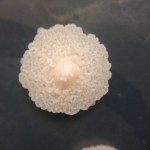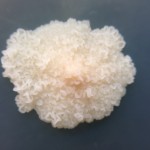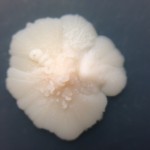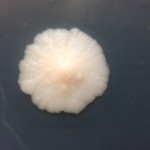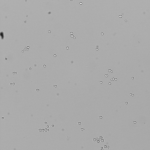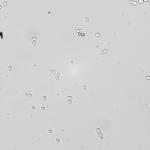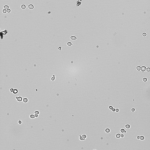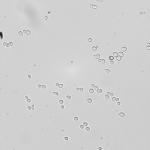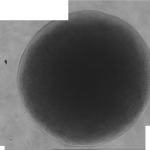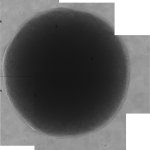I’m not sure what to make of these colony morphologies, but I thought I’d post them for the world to see. I started them a couple weeks ago to compare the growth to that of the E. coli morphology experiment, then just kept them growing to see what would happen.
Category Archives: Yeast
The Biophysical Effects of Heavy Water – My Defense Presentation
Defense Outline
Just over a week away now…
- Introduction
- What is D2O?
- The history of D2O
- Gilbert Lewis:
- purification
- biological effects
- The hypothesis
- Joseph Katz
- various experiments
- Gilbert Lewis:
- Uses of D2O
- NMR, mass spec
- The need for a D2O adapted organism
- Experiments in DDW
- use for space travel
- cure for cancer?
- The effects on life
- Tobacco Seeds
- The Crumley experiment and repeating the experiment
- Tobacco seed germination rate
- tobacco seed growth rate in low deuterium concentration
- Arabidopsis
- arabidopsis growth rate
- arabidopsis morphology
- E. coli
- growth rates
- adaptation and adapted growth
- morphology
- Yeast
- growth rates
- adaptation – can’t adapt
- morphology
- stall during cell division
- microtubule stabilization in D2O
- Tobacco Seeds
- Molecular effects
- Stabilization of biomacromolecules
- DLS experiments
- Catalase
- Ovalbumin
- YPD longevity
- DLS experiments
- Investigation of HD exchange
- mechanism and exploitation for protein struture studies
- FT-IR analysis
- Cavity ring-down analysis
- low cost measurement of local atmosphere isotopic composition
- Effect on DNA
- The pursuit of shotgun DNA mapping
- optical tweezers
- methods
- overstretching data
- Stabilization of biomacromolecules
- Future Work
- Arabidopsis
- adaptation
- seed growth in low deuterium
- Tobacco growth in low D2O
- Yeast morphology in taxol
- E coli protein expression in D2O and protein structure analysis
- DNA
- overstretching in D2O with intercalators
- Arabidopsis
Well there is my idea of how to present my dissertation. I’m not sure if/where I should put my discussion on open notebook science. Also there are a couple things that I could see going elsewhere. I could describe the yeast and e. coli stuff in parallel instead of one after another. Also the HD exchange stuff could easily go right after the yeast, e. coli, or even the tobacco seed stuff. What to do…
Otherwise I think the story is pretty compelling: history of D2O and the unanswered question by Lewis. Investigations into D2O effects and trying to understand low D2O concentration effects, effects on macromolecules, and the understanding of large volume/long-term HD exchange.
Any feedback you may have would be GREATLY appreciated. I’ll send you a figshare t-shirt, or if you are XL, I’ll send you a hoodie (but I only have one).
Feb 28 Yeast Growth
I’ve been scratching my head about this for the past two days. I could have sworn that I did a measurement of yeast growth after adaptation and it turns out I did. Here is the data:
I’ll graph this data and publish that when I’m done (after I defend).
Preliminary Results of YPD deterioration

These are the results of the experiment I stated a couple weeks ago. I have been tracking the deterioration (previously called aggregation, but I’m not entirely sure aggregation is the correct terminology) of YPD in both solvents. Today they looked pretty well degraded so I thought I’d share the results. Between the two, the DI YPD is more absorbent than the D2O YPD at nearly every wavelength measure (major uncertainty below 350nm).
I’m associating degradation with absorbance since the blank (which is also DI YPD) has an absorbance of zero at all the same frequencies.
D2O YPD also records 0 for absorbance at 600nm, which is the wavelength used for cell count studies, so there would be no interference from the solution. Whether or not the media is still usable by cells is undetermined.
I’m beginning a second experiment that would track the absorbance every few days via the same mechanism. If you recall, I began this experiment taking pictures and eventually moved toward using the nanodrop. This probe seems to do a good job so its continued use is reasonable.
Man I’ve been writing my dissertation for too long…
99% D2O Time Trial 2
99.9% D2O Time Trial
This is the last week of the adaptation experiment! YAY!
Yeast growth in 80% D2O Time Trial 2
Yeast morphology in 80% D2O
Yeast Colonies in 60% D2O YPD
So I suck at my own microscopy technique of taking pictures and combining them. In each case I left out a pretty sizable portion of the colony. 🙁 Oh well. I’m going to do these experiments again (cause I made 2 sets of each type of solid media, 0%-100% D2O) and will be taking new images then. Can’t wait!!
